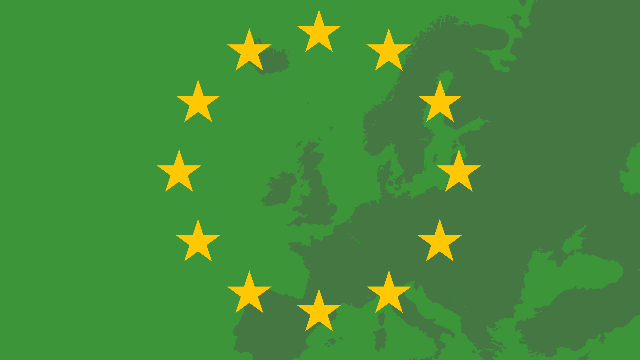Reflets Magazine #156 | How the EU's Environmental Regulations Are Boosting its Competitiveness
The European Green Deal has been strongly challenged in recent months. Rightly or wrongly? What are the consequences for the environment? Reflets Mag #156 presents the different perspectives of Bernard Leca (PHD 10) and Chrystelle Richard, professors at ESSEC, and Louis Raynaud de Lage (E14), Senior Impact & Sustainability Manager at Bartle.
Reflets Magazine: What is the environmental impact of digital technology?
Bernard Leca: The EU accounts for around 6% of greenhouse gas emissions for 5.6% of the world's population. It has reduced its emissions by just over 33% since 1990.
Louis Raynaud de Lage: It still has a major impact, however. The region is the fourth-largest emitter of CO2 behind China, the United States and India. 81% of Europe's natural ecosystems are in a poor state of conservation with the disappearance of 600 million birds since 1980 and a 70-80% drop in insect populations. More than half of our lakes, rivers and streams are in a “very critical” state, according to the Commission. Widespread PFAS contamination is expected to cost between €95 billion and €2,000 billion to clean up over the next twenty years. And Europe is warming twice as fast as the other continents.
RM: What measures is the EU taking to address this situation?
Chrystelle Richard: The objectives of the Paris Agreement, and especially carbon neutrality by 2050, have guided the EU's strategy and timetable since 2016.
Louis Raynaud de Lage: The European approach also revolves around a number of principles: the precautionary principle (with the aim of reducing the risk of unpredictable and uncertain damage), the preventive principle (anticipating damage is considered to be cheaper than repairing it), the principle of correcting pollution at source (action is taken at industrial sites rather than downstream), the DNSH (“Do No Significant Harm”) principle and the “polluter pays” principle. Within this framework, the EU is acting on two fronts. Firstly, political, through the Environment Action Programme (EAP). Secondly, regulatory, especially through the European Green Deal.
RM: What does the European Green Deal contain?
B. Leca : The Green Deal sets three major objectives. First: redirect capital flows into responsible investments. Second: manage the financial risks of climate change. Third: encourage companies to be transparent on these issues.
Louis Raynaud de Lage: The package includes €600 billion of investment linked to the EU's seven-year budget and the NextGenerationEU recovery plan, as well as a large body of legislation – the Nature Restoration Regulation (which aims to restore at least 20% of our land and marine areas by 2030), the Net-Zero Industry Act (which should promote the renewable energy market), the Deforestation Regulation, and the well-known CSRD, Taxonomy and CS3D triptych.
RM: Much has been written about the CSRD in particular...
C. Richard: And there's more to come, as the Commission has just proposed a simplified Omnibus package that has yet to be discussed by the Parliament and the Council. In the meantime and as it stands, the CSRD concerns European companies that meet two of the following three criteria: more than 250 employees, a balance sheet total of €25 million and €50 million in turnover. It requires them to produce sustainability reports in compliance with a set of 12 standards – the ESRS (European Sustainability Reporting Standards) – amounting to total of almost 1,200 data points to be provided. This figure needs to be put into perspective: it’s more of a catalogue-based approach, with each company picking out what it considers to be significant from a range of options, which generally halves the volume.
B. Leca: Another nuance stems from the fact that the CSRD is also an exercise in strategic thinking, involving what is known as a “dual materiality analysis", which assesses both the impact of the company's activities on the environment (“impact materiality”) and the impact of changes in the environment on the company's prospects (“financial materiality”).
Louis Raynaud de Lage: This is proving to be a powerful tool for moving beyond short-term profitability and in helping to take account of all the factors likely to influence results – not just the economic ones. This is all the more important given that dual materiality covers the entire value chain, from upstream (suppliers, service providers, etc.) to downstream (distributors, customers, etc.), as well as the entire product life cycle, from the extraction of the raw materials required for their manufacture to the end of their use.
RM: What about the EU Taxonomy?
Louis Raynaud de Lage: The taxonomy classifies companies' activities according to their alignment with six objectives: climate change mitigation, climate change adaptation, pollution prevention and control, protection and restoration of biodiversity, transition to a circular economy, and sustainable use and protection of aquatic and marine resources. If your project contributes to one or more of these objectives without harming the others, you can raise funds more easily and obtain loans at preferential rates.
RM: The EU's environmental regulations are currently attracting such criticism that the Commission has launched an Omnibus Directive to amend the texts of the Green Deal. What should we make of this?
Louis Raynaud de Lage: There are two reasons for this criticism. Firstly, they echo the anti-ESG and anti-welfare-state movement in the United States, which has been gaining momentum since Trump's election. There are two reasons for this. Firstly, US companies have realised that they are unable to reconcile their commitments to decarbonisation with their growth objectives. Another related motivation stems from these companies being hit hard by the legal action taken by NGOs, which have criticised them for their inaction and even for their greenwashing. Secondly, a number of European players are concerned that the continent is falling behind the United States and China, and are blaming environmental regulations for this.
RM: Are these criticisms justified?
Louis Raynaud de Lage: It all began with the Draghi report on European competitiveness, which called for administrative simplification, while also asserting that the EU's sustainability efforts were generating real competitive advantages – as all the academic literature of the last twenty years has shown. While attention should be paid to the bureaucratic red tape associated with the Green Deal, it is not the crux of the problem.
RM: Can we at least agree that the EU is the region of the world with the most stringent environmental regulations?
B. Leca: [Article continues in Reflets Magazine #156]
Published in Reflets Magazine #156. Read the issue exceptionally in free access. Subscribe to read our upcoming issues!
Interview by Louis Armengaud Wurmser (E10), Content Manager at ESSEC Alumni
Picture: © AdobeStock

Comments0
Please log in to see or add a comment
Suggested Articles



